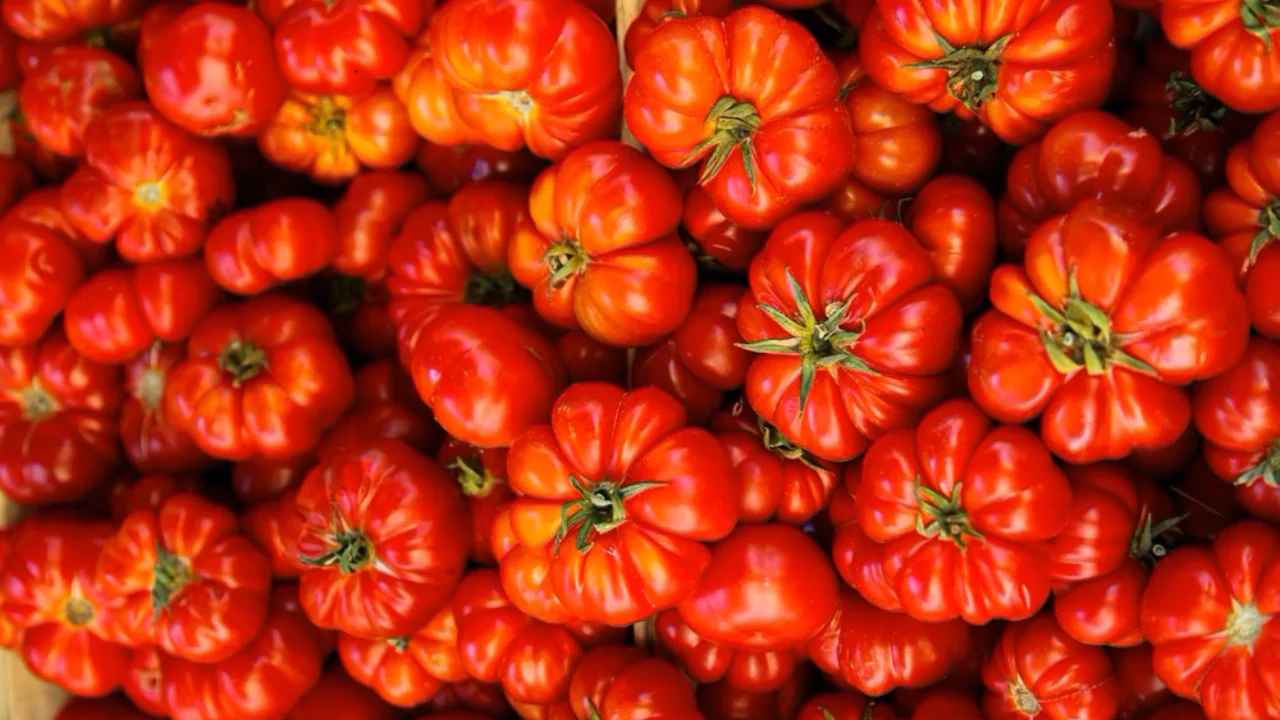
The Brandywine cultivars are one of the most popular heirloom tomatoes grown across North America. They are recognized for their impressive-sized fruits and great taste, with a pumpkin-like ridge appearance.
The Brandywine family consists of red brandywine, pink brandywine, orange brandywine, yellow brandywine and even black brandywine tomatoes. They are also distinguished by their strongly potato-leaved foliage which sets them apart from most other varieties of tomato.
Although there are both determinate and indeterminate varieties, it is mostly the indeterminate vining heirlooms that Brandywine is known for. While the exact age of these heirloom varieties is a mystery, it’s thought they were one of the first types to appear in seed catalogs and were brought over by the Amish.
Best Soil for Growing Brandywine Tomatoes
This heirloom variety prefers slightly acidic soil ph levels around 6.5. This can be difficult to achieve in some parts, therefore ensuring that this level is maintained several weeks before planting will greatly help in ensuring these levels can be sustained long term.
What’s more important than maintaining acidity however, is proper nitrogen management and “starving” plants at certain points to force more fruiting.
Proper Care of Brandywine Tomatoes
Brandywine tomatoes are not as easy to grow as other tomato varieties, which tend to have higher yields and are less demanding. They need comprehensive attention and maintenance in comparison with other cultivars.
Best practices for watering include avoiding wetting the leaves through spray irrigation. Plants saprophytes are eliminated when parasites that threaten this fragile plant. Eating more water via Mother Nature’s drip irrigation also nourishes the plants better than any moisture sprinkling their leaves would via parasite hose.
Balanced soil nutrition is required during germination, while established plants need a foot or two in growth before adding non nitrogenous fertilizers ((0-10-10). While cutting down N enriched chemicals discourages nitrogen-prospering foliage, heavy foliage is fats juiced after pinching suckers during early stages.
The reduced rate of foliage growth “stunting” these plants makes them ‘less bushy’ transforming them into productive fruit bearers instead.
Maintain this nitrogen starvation until fruits have appeared and are established. Afterwards apply balanced fertilizers again with moderate increased N levels (10-10-10). This strategy keeps overabundant foliage green whilst increasing leaf dimensions alongside enduring harvests.
Similar to most tomato varieties, Brandywine tomatoes also need support through staking, trellises, traditional tomato cages, or large hoops (some varieties can reach 8 feet tall).
When to Harvest Brandywine Tomatoes
Brandywine Tomatoes Harvesting As soon as fruits are ripe, you should harvest them without delay. They will likely ripen within the same couple of weeks on a single plant. Big tomatoes are produced by these plants and ready for harvest when they have reached their full size, achieved full coloration, and starting to soften to the touch.
Postponing harvest increases the chances of split and severely bruised tomatoes from the weighty fruits tumbling off the vine. For most varieties of Brandywines average 90 days or more is needed to reach full ripeness.
Saving Brandywine Tomato Seeds
All heirloom Brandywines can have their seeds saved from them. To collect the heirloom seeds for next planting season, simply slice open each tomato and scoop out the seeds in the center.
The leftover flesh can be enjoyed fresh or processed into different dishes. The seeds need to undergo cleaning to remove any filaments and residue before being dried in a warm yet dry environment.
This process allows for two to three hours of direct sunlight, however beyond that the seeds may dry out too quickly and die. Similarly, constant exposure to predators such as birds can result in losses. In warm climates, drying enough for storage will take around two to three days.
Pests and Diseases of Brandywine Tomatoes
A significant amount of pests and diseases target the Brandywine tomatoes. Due to their long ripening period, these tomatoes are especially vulnerable since they are neither hardy nor disease-resistant, which means virtually all tomato pests pose a threat.
Watering at the base of the plant helps eliminate most fungal infections for the tomato plants while encouraging Marigold-like plants along with them can help fend off many bugs.
Preventative netting is popular for protecting against birds and bugs as well as beetles but unfortunately blocks out pollinators and insectivores like bees, wasps, and other beneficial insects which also aids in plant health.
Learn more:
Common tomato diseases and how to manage them organically
Common tomato pests and how to control them
How to Prepare Brandywine Tomatoes
Among table tomatoes, Brandywines are the most preferred by every category of people. The taste is sweet; they have large fruits although some may not be visually appealing.
Brandywine’s shelf life is limited, so they can also be processed for canning, pickling, saucing, or drying. Dried Brandywines offer delightful sweet slices that can even be cut into large aesthetic pieces.
Tips for Growing Brandywine Tomatoes
Closed off home gardeners should rather not use these as their sole variety, because these are difficult to grow. Most gardeners need 2-3 years of attempts before successfully growing Brandyewine crops.
For best results, dedicate time and effort throughout the entire season from the start so that it doesn’t require a lot of tender care during the growing season.